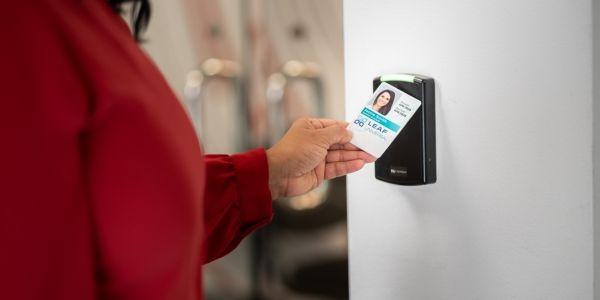How to Address Door Access Control System Migrations
Speak With An Expert
Hola mundo alerta alerta
If my organization is upgrading our access control security, does this mean we need to replace all our door readers?
This question can be top of mind for many IT and security leaders as they consider technology migrations and must strategize about how they will converge their physical and logical access points as part of the migration path. Ultimately, migrating your door access control system is a critical step in enhancing security and operational efficiency to ensure you’re paving the way for future technological compatibility.
This blog will guide you through the process of addressing door access control system migrations in conjunction with your logical access system, highlighting the advantages, challenges, and considerations to ensure a smooth transition.
Legacy door access control systems have served organizations well for decades, but they are now outdated and susceptible to cloning and unauthorized access. Not only are the doors unsecure due to traditional keys or simple PIN codes being used, but an outdated door access control system also typically lacks an audit trail that can correctly identify the source of the threat.
Furthermore, the cost associated with legacy physical access systems can be expensive. As components become dated, replacement part costs add up and may no longer be supported. Legacy tech maintenance is also affecting more than just a budget, it reduces productivity and the bottom line. More than three-quarters of IT decision-makers said their teams spend 5 to 25 hours a week updating and patching legacy systems. To maximize the upgrade investment, it’s vital to meet current and future needs, prioritizing a multi-layered solution that addresses logical and physical access systems.
Modern threats require advanced security measures that make access control systems capable and compliant. Migrating to more secure solutions such as encrypted smart cards, mobile credentials, or FIDO passkeys offers an opportunity to standardize technology that can be leveraged across multiple different applications.
As organizations upgrade their access control systems, it's essential to consider the convergence of logical and physical access points. Modern access control solutions integrate seamlessly with IT infrastructure, allowing for unified management of both physical entry points and digital access.
This convergence enhances security by providing a comprehensive view of access events and enabling more effective monitoring and response to potential threats. By adopting solutions that support both physical and logical access, organizations can streamline their security operations and improve overall efficiency.
Migrating to a new access control system doesn't have to be an all-or-nothing approach. Implementing a phased migration strategy allows organizations to spread out costs and minimize disruption.
Dual technology cards and readers, which support both legacy and modern credentials, can facilitate a smooth transition. These solutions enable organizations to gradually phase out outdated systems while maintaining compatibility with existing infrastructure.
By adopting dual technology solutions, organizations can ensure continuous security during the migration process and avoid the pitfalls of a sudden, large-scale overhaul.
Migrating your door access control system is more than just a security upgrade—it's a strategic move towards future-proofing your organization's infrastructure. By integrating physical and digital security, adopting phased approaches, and leveraging dual technology solutions, you can ensure a smooth and effective transition.
Take proactive steps now to enhance your security, streamline operations, and protect your organization from evolving threats. The time to act is now, before a breach forces your hand.